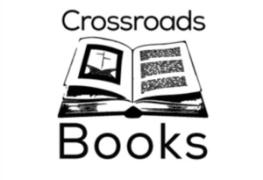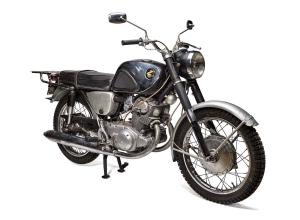Bright Young Collectors: Sophie Ridley
Our Bright Young Collectors series continues today with Sophie Ridley of Shropshire, collector of books on crafts and school education.
Where are you from / where do you live?
I'm a country girl through and through having been brought up in rural north Shropshire, close to the Welsh border.
What do you study at University? What do you do now for an occupation?
I studied Archaeology and Anthropology at Oxford University. Having graduated over the summer I am now aiming at a career in museums. To this end, I am building up as much voluntary curatorial experience as possible at local museums.
Please introduce us to your book collection. What areas do you collect in?
My collection covers the topic of crafts and their introduction to school education from the 1870s to the 1930s. It traces the transitional period from the highly restrictive education system of 'the three Rs' to one which recognised that a more varied education with practical elements was highly beneficial to children's learning. As such, I have books that were produced as educational treatises, those that aim to inspire and inform teachers, and others that were to be used by children themselves. I am also beginning to include recent books which trace the increasing resurgence of such themes in today's schools. These form their own contextualising section in the broad collection.
How many books are in your collection?
At present my collection stands at 32, but of course there are a number I am ever on the lookout for.
What was the first book you bought for your collection?
I hardly know, as I never set out to collect. Rather, the early development of my collection came about during my A-levels where in free periods I would head into town to my local British Red Cross charity shop. They have an interesting selection of older books that are restocked on a rolling basis. I would buy books on any topic that caught my fancy and from this the theme of crafts emerged. It was the chance find of a copy of the first three volumes in Holman's series of 6 volumes 'The Book of School Handwork' that introduced the educational element and really added direction to the crafts theme which came to dominate and ultimately form my collection.
How about the most recent book?
I have just got round to treating myself with my winnings from the Colin Franklin Book Collecting Prize. The book is a first edition of William Morris' 'The Decorative Arts, Their Relation to Modern Life and Progress: An Address Delivered before the Trades' Guild of Learning'. Morris was such an influential figure, both in promoting the value of craftsmanship and also with his socialist views that work should be satisfying. As such this book is highly pertinent to my collection. There is a further significance in that I spent three months this summer doing research work at Kelmscott Manor, his summer home. I am very glad to finally be able to nestle Morris' influential text amongst my other books.
And your favorite book in your collection?
As is perhaps common, I have no single favourite. Indeed, the book I would like to highlight here is far less directly relevant to the theme of my collection than many of the others. Kenneth Grahame's 'The Golden Age' captures a broad change in public attitude towards children, embracing their imaginative creativity. My copy, a first edition published in 1895, came at the cusp of the changes in education that my collection traces. The elevated value of crafts and social reform that Morris and his contemporaries set in motion at last began to seep into school education. Teachers began to recognise the benefit of practical 'handwork' even in subjects like history, geography and mathematics.
Best bargain you've found?
I like to think that all of my books have been relative bargains. The topic area is not one that is commonly collected and most of my finds have been from the fringe stalls at antiques fairs, from charity shops and on occasion even a car-boot sale.
How about The One that Got Away?
To my shame, this missed opportunity was entirely my own doing. At a local antiques fair I came across a lovely copy of Tom Stephenson's 'The Countryside Companion' which has a good section on rural crafts. Despite the very reasonable price of £2 I walked away, convinced it was one in a bundle that I was awaiting delivery of. Unfortunately I was mistaken and I haven't come across it since, but will certainly snap it up when I do.
What would be the Holy Grail for your collection?
This would have to be a copy of Edward Combes' 'On the Value of Technical Training, and the Teaching of Drawing and Handwork in Public Schools'. Published in 1889 as a paper in the September edition of the Journal of the Franklin Institute, it is not something that I have found to be readily available, even on the internet. This early work is heavily referenced in a number of texts already in my collection and I would dearly love to see what Combes says for himself, never mind find a copy for myself.
Who is your favorite bookseller / bookstore?
As mentioned above, my collection was never set out to be such, and the topic area is quite an overlooked one. Therefore, I have no particular go-to bookshop or seller. Rather, I will still return to the Oswestry British Red Cross shop to browse and for the most part allow my collection to grow slowly through chance finds in unexpected places. It certainly makes each addition more exciting than if I have trawled for it on the internet, although on occasion this has proved necessary.
What would you collect if you didn't collect books?
If I didn't collect books I would collect items made from bone. Whilst on an archaeological excavation I had the chance to make some replica artefacts out of bone. I developed a love for the material. This led me to choose Anglo-Saxon bone combs as the subject for my dissertation. These days, unfortunately, there is a rather negative view of bone objects - a feeling that it is a little macabre as a material. I think that this is a great shame as bone has been used by mankind from the earliest times as a key resource, only overtaken with the rise of plastics. A collection of bone objects would be a reminder of the great history of use, but also would be an array of items pleasing both through the craftsmanship displayed and the inherent material properties.

















